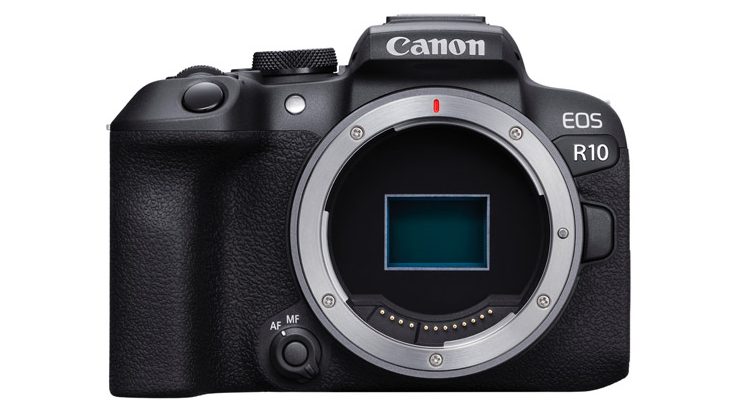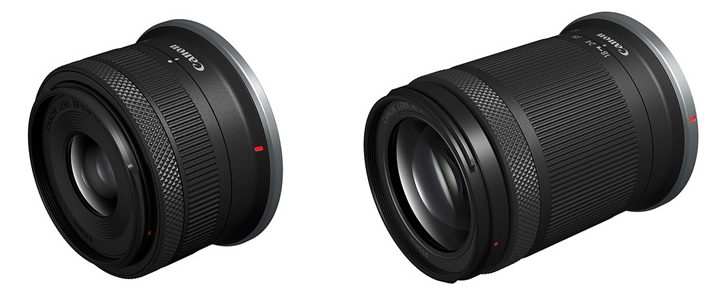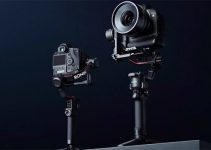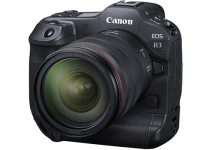Fresh off the heels of leaks on their new APS-C cropped sensor cameras, Canon has made the EOS R7 and R10 cameras official. The cameras are cropped sensor cameras, with the R7 seeming to be the heir apparent of the Canon 7D Mk. II or 90D, while the R10 looks to be more of an entry-level Rebel-style offering.
Taking a closer look at the new APS-C mirrorless cameras, the differences between the two models isn’t all that far-reaching. In fact, one could point to what they have in common more than what sets them apart.

Image Credit – Canon
Canon EOS R7
The Canon EOS R7 is driven by a 32.5 MP CMOS image sensor with in-body image stabilization (IBIS). It is not a BSI or stack sensor like on the R6. Being an is an APS-C mirrorless camera it has a stock crop factor of 1.6x and comes with a standard RF mount. Doing the math, the Canon RF 70-200mm f4L IS USM, will effectively become a 112-320mm lens.
Performance-wise, the R7 is capable of an ISO range of 100-32,000, expandable to 51,200. The R7 is capable of burst modes of 15 fps burst in mechanical mode, and a cinematic 30 fps burst in electronic mode. The In-Body Image Stabilization (IBIS) is capable of stabilizing an image at up to a 3° tilt of the camera.
For video, the camera is capable of capturing 4K30p oversampled from 7K with full readout, 4K60p, and 1080/120. But what is really huge is that the R7 has an unlimited record time, that will only be cut short due to the size of memory cards and battery life. It offers CLog 3 and there’s a special Vertical Video mode so that editing software can properly read the video files upon import.
The camera uses a DIGIC X processor for all its heavy lifting to write and process the image data coming from the sensor, which is the same as in the R3, R5, and R6. This brings with it the advantage of having very similar autofocus performance as the higher end R3, with three main tracking modes for People, Animals, and Vehicles.
With dual UHS-II compatible SD card slots, there’s plenty of room to keep shooting, and there’s a 3” Vari-angle touchscreen Canon has kept the Electronic Viewfinder while many expected it to be eliminated.
Canon has also added a digital hot shoe for use of accessories like a digital microphone, or video light, and connections include USB-C and micro HDMI.
The camera uses the same LP6/8 battery as the R6.

Image Credit – Canon
Canon EOS R10
Meanwhile, as stated, the lower end R10 has several shared features with the R7 but enjoys a much lighter, and more plasticky Rebel Style design. The CMOS image sensor is a 24.2 APS-C sensor with no IBIS, which is understandable considering it’s an entry-level model.
ISO range is 100-32000, expandable to 51200, like the R7, and it can shoot bursts at a similar rate of 15 fps mechanical, though the electronic burst is slightly shorter at 23 fps. But it has the same DIGIC X processor and even enjoys the same autofocus functions as the R7.
For video, there is no C-Log, but the camera will capture 4K30 video oversampled from 6K, with additional modes of 4K30 and 1080p120. It also offers the same unlimited recording time but relies on the LPE17 battery, which tops out at two hours of battery life when shooting video.
The camera also has USB-C, a digital hot shoe, and even a Rebel-style pop-up flash for low light.

Image Credit – Canon
RF-S Lenses
And to have the best of both worlds, Canon also announced a pair of RF-S lenses. The RF-S18-45MM F4.5-6.3 IS STM and RF-S18-150MM F3.5-6.3 IS STM.
What’s interesting is that while they are EF-S and have a smaller image circle for the APS-C image sensor, they enjoy the same RF mount connection which makes them interchangeable with their older RF brothers.
The lenses feature optical image stabilization circuitry, capable of up to seven stops of compensation.
Pricing and availability:
Pricing of the Canon EOS R7 is $1,499 body only, or $1,899 w 18-150mm RF kit lens. The retail price of the Canon EOS R10 is $979.99 (body only), but also comes with the 18-45mm RF-S Kit lens for $1,099, or the 18-150mm RF-S lens for $1,379.
Separately, the RF-S18-150mm F3.5-6.3 IS STM lens will be available for an estimated retail price of $499.00, while the RF-S18-45mm F4.5-6.3 IS STM lens will have an estimated retail price of $299.99.
All products will ship in late 2022 and are subject to chip availability.
[source: Canon]
Order Links:
- Canon EOS R7 APS-C Mirrorless Camera (B&H, Adorama)
- Canon EOS R7 Mirrorless Camera with 18-150mm Lens (B&H, Adorama)
- Canon EOS R10 APS-C Mirrorless Camera (B&H, Adorama)
- Canon EOS R10 Mirrorless Camera with 18-150mm Lens (B&H, Adorama)
- Canon EOS R10 Mirrorless Camera with 18-45mm Lens (B&H, Adorama)
- Canon RF-S18-150mm F3.5-6.3 IS STM lens (B&H, Adorama)
- Canon RF-S18-45mm F4.5-6.3 IS STM lens (B&H, Adorama)
Disclaimer: As an Amazon Associate partner and participant in B&H and Adorama Affiliate programmes, we earn a small comission from each purchase made through the affiliate links listed above at no additional cost to you.



